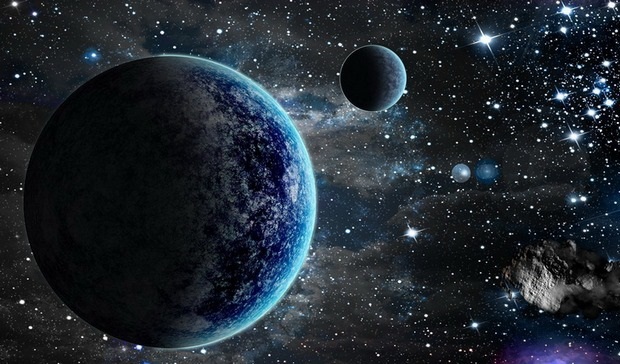Parts of Venus, which could be home to life, might be on the moon

Pieces of Venus, which scientists recently said showed signs of potential life in its clouds, could actually live on the moon, according to a new study.
The research, which has been accepted by the Planetary Science Journal, said the second planet in the solar system could have sent “as many as 10 billion rocks” into space after impacts from asteroids and comets. These rocks may have ultimately intersected with Earth and the moon.
“Some of these rocks will eventually land on the moon as Venusian meteorites,” said the study’s lead author, Samuel Cabot, a Yale graduate student, in a statement.
It’s likely that these impacts happen “every hundred million years or so,” the statement added but were more frequent billions of years ago.
“The moon offers safe keeping for these ancient rocks,” Cabot explained. “Anything from Venus that landed on Earth is probably buried very deep, due to geological activity. These rocks would be much better preserved on the moon.”
Venus, which has been called “Earth’s evil twin,” has an extremely harsh climate, with a surface temperature of 864 degrees Fahrenheit. Researchers are still learning a great deal about its past, and any fragments that live on the moon could provide a wealth of information, Yale University astronomer and study co-author Gregory Laughlin said.
“An ancient fragment of Venus would contain a wealth of information,” Laughlin explained. “Venus’ history is closely tied to important topics in planetary science, including the past influx of asteroids and comets, atmospheric histories of the inner planets, and the abundance of liquid water.”
In September 2019, a separate group of researchers suggested Venus was once habitable, with stable temperatures and was home to “liquid water” for 2 to 3 billion years. Eventually, a “dramatic transformation” started happening more than 700 million years ago that completely reshaped the planet and resurfaced approximately 80% of it.
It’s likely too hot to support life, but NASA has recently said that it intends to explore the planet. In late 2019, the space agency said it was working on a stingray-like spacecraft to explore the planet.
In July, researchers revealed that Venus has nearly 40 active volcanoes on its surface. It has more volcanoes than any other celestial body in the solar system.
Separately in July, a number of researchers argued that going to the second planet in the solar system could have benefits for a manned mission to Mars.



 Creators of mankind
Creators of mankind Description of “Tall white aliens”
Description of “Tall white aliens” Where they came from?
Where they came from? About hostile civilizations
About hostile civilizations The war for the Earth
The war for the Earth “Tall white aliens” about eternal life
“Tall white aliens” about eternal life Video: “Nordic aliens”
Video: “Nordic aliens” Aliens
Aliens Alien encounters
Alien encounters The aliens base
The aliens base UFO
UFO Technology UFO
Technology UFO Underground civilization
Underground civilization Ancient alien artifacts
Ancient alien artifacts Military and UFO
Military and UFO Mysteries and hypotheses
Mysteries and hypotheses Scientific facts
Scientific facts


















